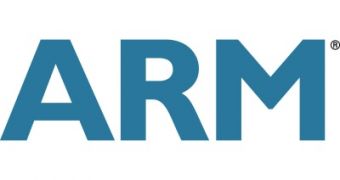Chip maker ARM announced yesterday its first Cortex family processor core built using a 32nm manufacturing technology. Following that announcement, the company has recently introduced a new, low-cost processor, dubbed “Sparrow,” which it claims to be aimed at the increasingly popular netbook market. The new chip takes advantage of ARM's multi-core Cortex A9 architecture and is expected to power some of the upcoming netbook computer systems, which will likely debut sometime next year.
The new ARM Sparrow chip has been designed as a small, inexpensive chip that is based on the chip maker's top-of-the-line Cortex A8 product, a product that is currently used in the recently unveiled Palm Pre smartphone. According to the company, the Sparrow chip has about the same power of an ARM11, a chip used by Apple for its iPhone. However, the Sparrow can be used in a multi-core setup, which will boost performance and allow system builders to use it in a larger device.
ARM's new processor could certainly bring a refresh to a market that has mostly been dominated by Intel and its Atom processor, followed by VIA. Also, the new processor could enable system builders to bring more Linux-based netbooks to market, as most Intel Atom-powered netbooks are featured win a Microsoft Windows XP operating system, which can easily be integrated on a platform that supports Intel's x86 processor microarchitecture.
According to ARM, partners like Toshiba, Pegatron and Wistron are all showing demos of ARM-based netbooks. These netbooks can be powered by Ubuntu or Debian Linux operating systems, both of which are built to support ARM's processors.
“We're in the position of getting a general distribution that's optimized for our ARM architecture and people can pick that up and do what they want,” said Laurence Bryant, mobile segment marketing manager for ARM.

 14 DAY TRIAL //
14 DAY TRIAL //